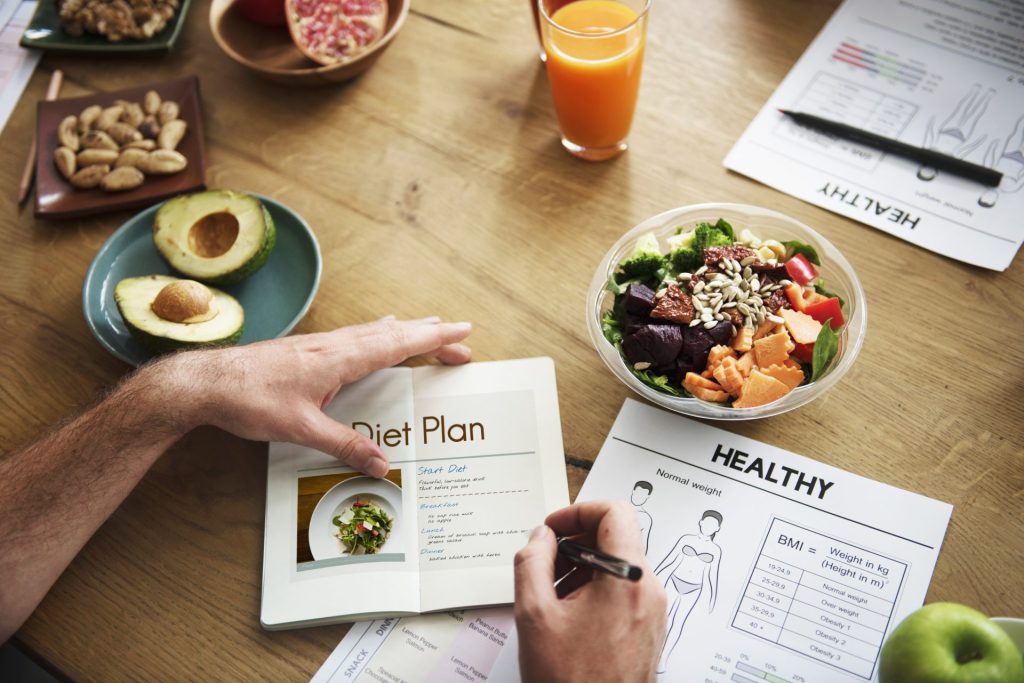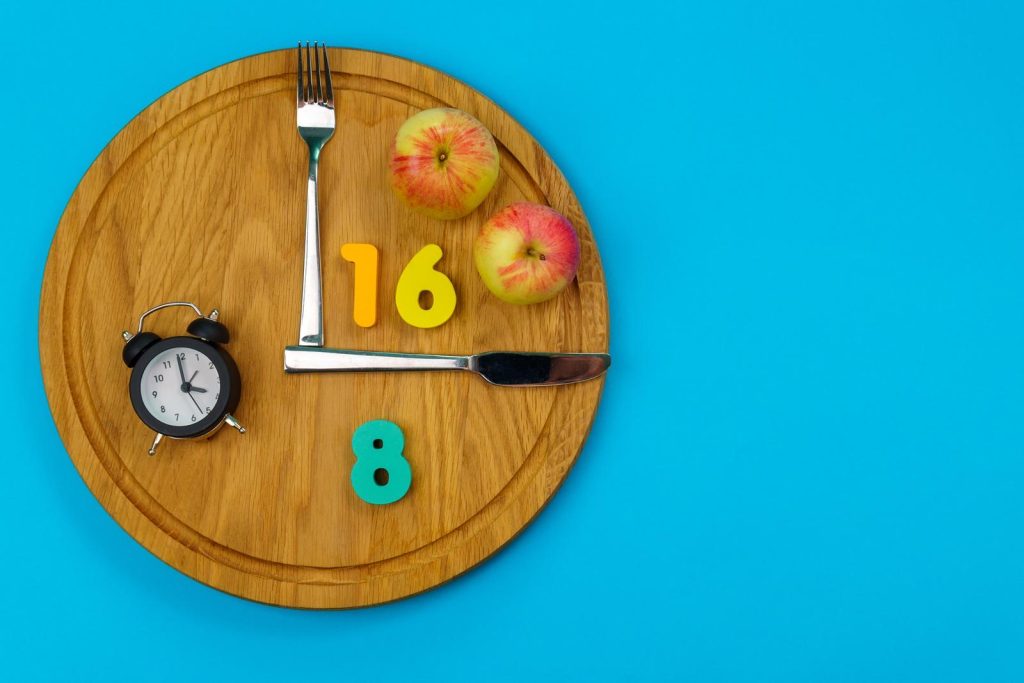In a world where fitness and science converge, one method has captured the spotlight for its potential to trim belly fat and enhance overall health: Intermittent Fasting. As we delve into the intricacies of this approach, it’s essential to navigate through the sea of information with precision and expertise.
Are you intrigued by the idea of shedding stubborn belly fat? Do you want to understand how intermittent fasting can be harnessed for optimal results? Join us as we embark on a journey through the world of intermittent fasting windows, armed with expert tips that promise not only to melt away inches from your waistline but also to empower you with scientific insights into this transformative process.
Contents
- What is Intermittent Fasting
- Choosing the Best Intermittent Fasting Schedule Window
- Trimming Belly Fat: The Science Behind It
- Expert Tips for Optimal Belly Fat Reduction
- Meal Ideas for Effective Belly Fat Reduction
- Addressing Common Concerns and Misconceptions
- Monitoring Progress and Adjustments
- Wrapping Up
What is Intermittent Fasting
Intermittent fasting isn’t a one-size-fits-all regimen. It’s a flexible strategy that allows you to adapt your eating patterns according to your lifestyle and preferences.
Some popular fasting windows include the 16/8 method, where you fast for 16 hours and eat during an 8-hour window; the 18/6 method, extending the fasting period by 2 hours; and the more intense 20/4 method.
There’s the 5:2 approach, which involves regular five-day eating and restricted calorie intake in the other two. These varied approaches ensure an intermittent fasting style suited to different individuals, making it a versatile tool for your fitness journey.
Igniting Metabolism and Ignoring Fat
At the heart of intermittent fasting lies a metabolic dance that triggers remarkable changes within your body. During fasting periods, when you’re not consuming calories, your insulin levels drop, allowing your body to access stored fat for energy.
This process, known as lipolysis, prompts your body to break down triglycerides, shrinking fat cells and contributing to the reduction of belly fat over time. The fasting state also promotes a surge in human growth hormone (HGH), which further aids fat loss and muscle preservation.
Beyond Weight Loss: A Symphony of Health Benefits
While the visual appeal of a slimmer waistline is compelling, the benefits of intermittent fasting extend far beyond shedding pounds. One notable advantage is the improvement in insulin sensitivity. Consistent fasting makes cells more receptive to insulin, leading to better blood sugar control.
Cellular repair mechanisms are set in motion as a process called autophagy kicks in. This natural “clean-up” process eliminates damaged cells and promotes cellular rejuvenation, potentially warding off chronic diseases and promoting longevity.
Choosing the Best Intermittent Fasting Schedule Window
Let’s dissect choosing the perfect fasting window, which hinges on individual differences, consistency, and strategic meal timing.
No two individuals are identical; neither are their metabolic rates, daily routines, or dietary inclinations. Before embracing a specific intermittent fasting window, it’s crucial to acknowledge your unique characteristics.
Do you have a fast metabolism that craves frequent meals, or does a longer fasting period suit you better? Does your daily schedule mesh with an earlier or later eating window? The answers to these questions lay the foundation for your fasting journey.
Consistency and Sustainability: The Pillars of Fasting Success
In the world of sports and fitness, consistency is the bedrock upon which success is built. The same principle holds for intermittent fasting. Selecting a fasting window that seamlessly integrates with your lifestyle increases the likelihood of adhering to the regimen.
Opt for an approach that aligns with your daily commitments, ensuring that fasting becomes a sustainable habit rather than a fleeting experiment.
Timing is Everything: The Impact of Meal Timing on Results
Imagine approaching a workout with impeccable timing – the results would undoubtedly be more pronounced. The same concept applies to meal timing within your intermittent fasting window.
Strategically planning your meals can influence insulin levels, optimize nutrient absorption, and enhance fat oxidation. Complement your fasting periods with well-timed nutrient intake to maximize the benefits of the fasting state.
Trimming Belly Fat: The Science Behind It
Let’s journey into the science of belly fat, the role of intermittent fasting, and expert tips that will be your allies in this quest.
1. The Duel: Visceral Fat vs. Subcutaneous Fat
Before we dive into the intricacies of belly fat reduction, it’s crucial to differentiate between two types of fat: visceral and subcutaneous. Visceral fat, the hidden enemy lurking around organs, poses greater health risks than its subcutaneous counterpart, which resides beneath the skin.
Interestingly, intermittent fasting has demonstrated a unique prowess in targeting visceral fat, reducing its accumulation, and promoting overall health.
2. Intermittent Fasting’s Precision Strike on Belly Fat
The beauty of intermittent fasting lies in its metabolic orchestration. As you embrace designated fasting windows, your body’s insulin sensitivity improves, curtailing the propensity to store fat around the midsection.
The fasting state also triggers an increase in growth hormone levels, which enhances fat breakdown and lean muscle preservation. This dynamic combination makes intermittent fasting potent for whittling down belly fat.
3. Hormones at Play: Insulin and Cortisol in Belly Fat Dynamics
The science of fat storage involves a hormonal ballet, with insulin and cortisol playing pivotal roles. Elevated insulin levels, often due to frequent eating, promote fat storage – particularly around the abdomen.
On the other hand, cortisol, the stress hormone, can contribute to belly fat accumulation. Intermittent fasting helps regulate these hormones, creating a hormonal environment conducive to shedding belly fat.
Expert Tips for Optimal Belly Fat Reduction
Tip 1: Balancing Nutrient Intake during Eating Windows
Balancing macronutrients – protein, carbohydrates, and fats – during your eating windows is pivotal. Protein supports muscle preservation and satiety, while controlled carb intake prevents insulin spikes and fat storage.
Tip 2: Staying Hydrated and Incorporating Herbal Teas
We often underestimate hydration in the battle against belly fat. Herbal teas, like green tea contain antioxidants that aid metabolism and fat oxidation, amplifying the effects of intermittent fasting.
Tip 3: Emphasizing Whole Foods and Avoiding Refined Carbs
Whole foods are your allies in this endeavor. Opt for complex carbohydrates, fiber-rich vegetables, and healthy fats while steering clear of refined carbs that contribute to insulin resistance.
Tip 4: Combining Fasting with Exercise and Physical Activity
Pairing intermittent fasting with regular exercise forms a dynamic duo for belly fat reduction. Exercise not only burns calories, but also enhances the impact of fasting on fat breakdown.
Tip 5: Managing Stress through Mindfulness and Relaxation Techniques
Stress-induced cortisol can thwart belly fat reduction efforts. Incorporating mindfulness practices, meditation, and relaxation techniques into your routine helps manage stress and promote a healthier hormonal balance.
Meal Ideas for Effective Belly Fat Reduction
As you embark on your quest to trim belly fat, let’s explore meal ideas tailored to your fasting windows, ensuring you’re nourished, satisfied, and poised for success.
High-Protein Breakfast Options
Kickstart your day with protein-packed breakfasts that provide sustained energy and promote satiety. Think scrambled eggs with spinach and avocado, Greek yogurt parfaits with berries and nuts, or protein-rich smoothies.
Filling and Nutritious Lunches
For lunch, opt for well-rounded meals that balance protein, healthy fats, and fiber. Consider grilled chicken salads with a variety of colorful vegetables, quinoa bowls topped with roasted veggies, and a source of lean protein, or hearty vegetable soups.
Snack Choices to Keep Hunger at Bay
Selecting smart snacks can help prevent overindulgence during eating windows. Reach for nutrient-dense options such as a handful of almonds, carrot sticks with hummus, or a piece of fruit paired with a small serving of cottage cheese.
Dinner Recipes that Complement Fasting Periods
Dinner can be a culinary adventure that complements your fasting periods. Experiment with lean protein sources like fish or tofu paired with steamed vegetables or a side salad. Opt for light, flavorful options that align with your fasting window.
Addressing Common Concerns and Misconceptions
Monitoring Progress and Adjustments
Wrapping Up
As we close the chapter on this exploration, let’s recap the formidable benefits of this approach. Intermittent fasting isn’t a fleeting trend; it’s a scientific strategy that taps into metabolic dynamics, targeting visceral fat and promoting overall health. But amidst the enthusiasm, remember the pillars of success: patience, consistency, and sustainable practices. Your journey isn’t a sprint but a purposeful stride toward lasting transformation.
So, with the wisdom gleaned from this journey, embark on your intermittent fasting odyssey armed with a well-informed choice of fasting window. Let science guide your steps, your choices fuel your progress, and let the vision of a fitter, healthier you be the guiding star that lights the way.




